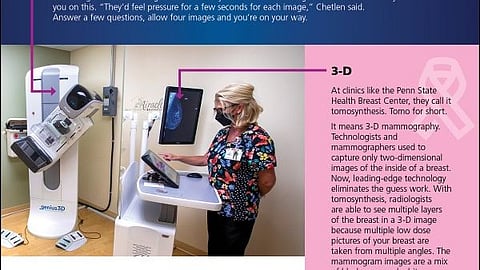Every day, Dr. Alison Chetlen works as a lookout to stop one of the planet’s most notorious killers. And her view keeps getting better.
Chetlen, a staff physician in general diagnostic radiology, and her colleagues at the Penn State Health Breast Center use state-of-the-art technology to root out the second most common cancer and cause of death among women in the U.S. Doctors diagnose about 264,000 cases of breast cancer in women in the U.S. every year, according to data from the U.S. Centers for Disease Control and Prevention, and 2,400 cases in men. The disease will kill 42,000 women and 500 men.
Early detection often can stop it, and that’s where Chetlen and her fellow mammographers and technologists come in. They have an arsenal of imaging tools and technology to find even the smallest cause for concern, but nothing bests the bellwether ― a tried and true annual mammogram.


